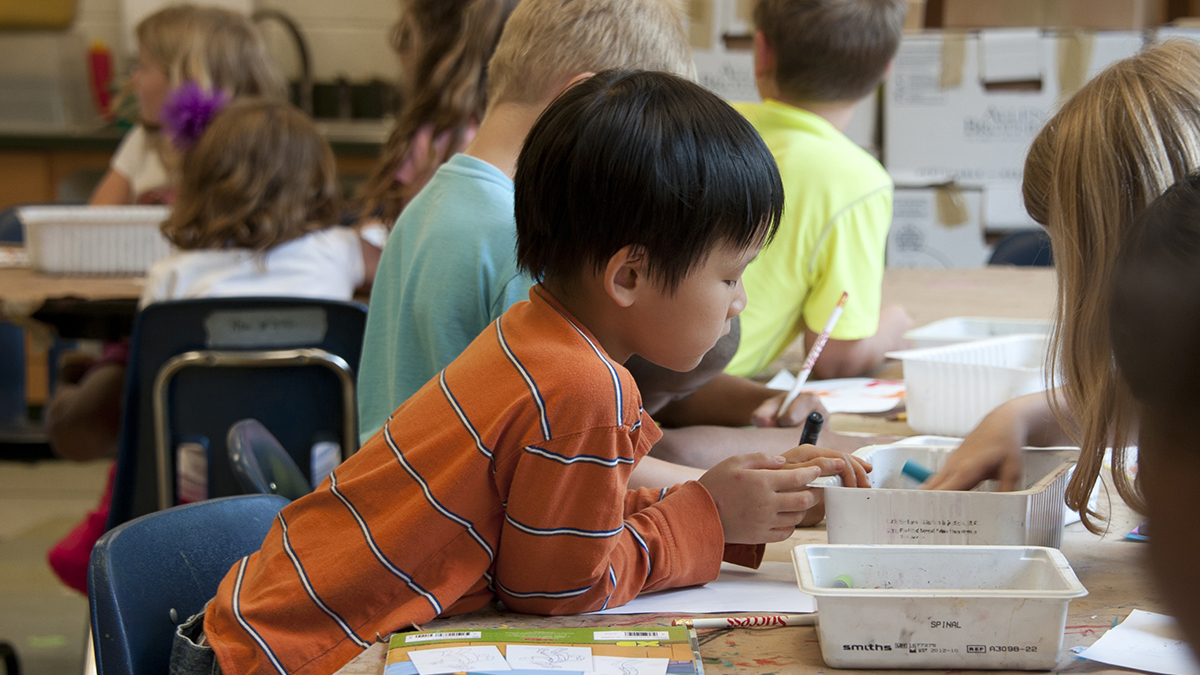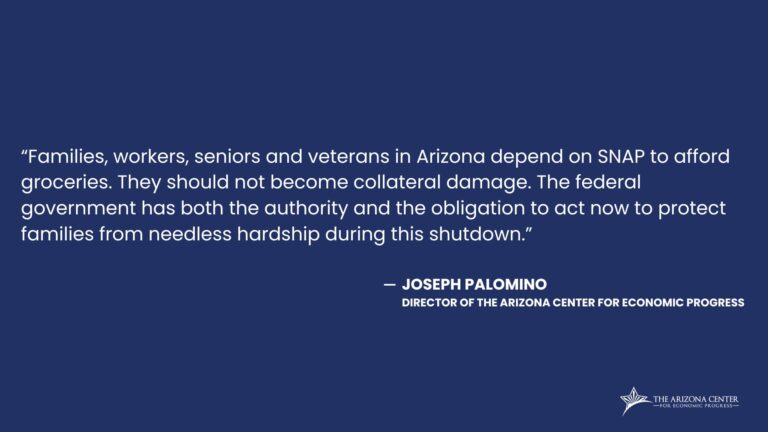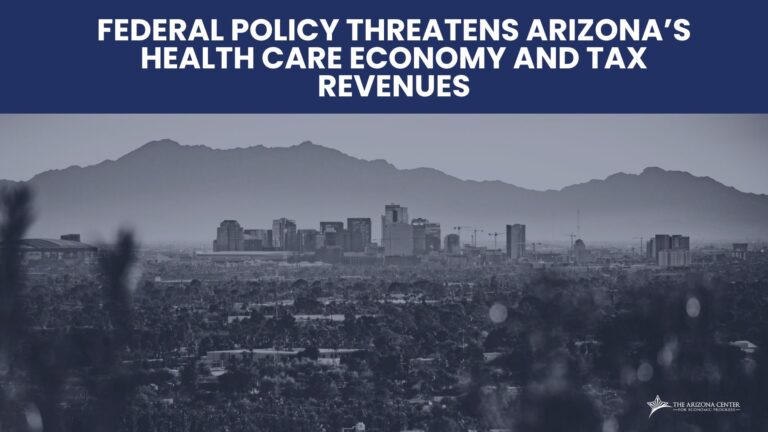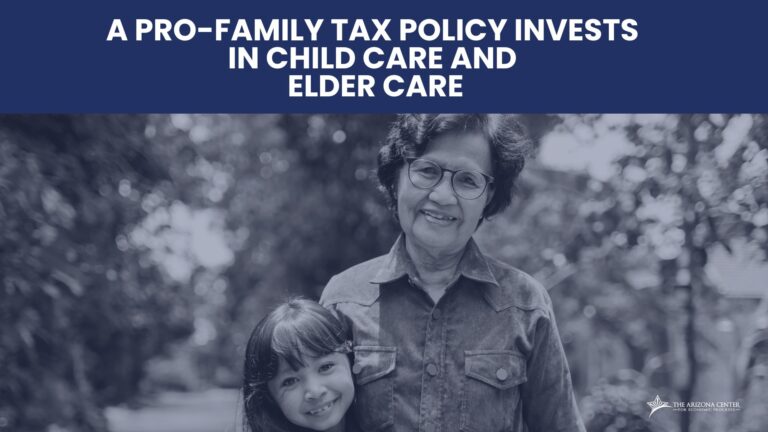
More Than Two Decades of Underfunding Arizona Public School Facilities Hurts Low-Income and Rural Communities the Most
Are the public schools in your neighborhood properly designed to keep students safe and secure? Does the air conditioning system work adequately enough for students to learn in comfortable classrooms on sweltering Arizona days? Do the classroom roofs leak on rainy days?
Because the legislature is failing in its responsibility to adequately fund school facilities, for thousands of Arizona students the answers to these questions often depends on whether their school district is located in an area of low or high property wealth.
In the 1970’s and 1980’s, Arizona’s public schools relied on their local voters to pass bonds in order to raise the revenue needed to repair school facilities and build new ones. This resulted in significant disparities in funding and in the quality of school facilities for schools in low property wealth areas compared to schools in higher property wealth areas. In 1998, the Arizona Supreme Court declared that requiring school districts to rely on local bond elections to fund school facilities needs was unconstitutional under the Arizona Constitution and that it is the state’s responsibility to fund all school districts in an equitable manner. In response to the Supreme Court’s order, the Arizona legislature enacted the Students FIRST legislation, which was to provide annual funding from the state’s general fund to all school districts to address their school facilities’ needs.
In the two decades which have followed, the Students FIRST legislation has been gutted, leading once again to huge differences in funding and quality of school facilities in low property wealth urban and rural communities compared to wealthier areas. It has resulted in higher local property taxes and many missed opportunities to create jobs in some of Arizona’s most economically struggling rural communities.
State Failing to Provide Schools with Ongoing Revenue to Maintain Facilities
The Students FIRST legislation created the Building Renewal Fund. Monies in the Building Renewal Fund were to be distributed to school districts based on a formula and were to be used to do preventative maintenance and repair and replace aging school buildings. However, the Building Renewal Fund was only fully funded for one year in 2001, and it received its last appropriation in 2008, and then was completely repealed by the legislature in 2013.
While the legislature has appropriated money the past few years for a building renewal grant program, the amount appropriated is $3 billion less than what schools would have received had the building renewal formula not been repealed. In addition to the building renewal formula being replaced with an inadequate grant program, school districts cannot use these grants for preventative maintenance. Instead, schools now have to wait for something to fail before starting the building renewal grant process through the School Facilities Board, even then, some grant requests are denied.
Arizona’s Public School Facilities are Stuck in the 1990s
Several research studies have shown that the quality of school facilities can have a profound impact on both student achievement and the ability to attract and retain quality teachers. School facilities affect students’ learning environment, health, behavior, engagement and safety. Despite the importance of school facilities to student success, Arizona’s guidelines for what constitutes a “minimally adequate” school campus have never been updated since they were adopted by the School Facilities Board between 1999 and 2002. These guidelines set the floor for what every public school campus in Arizona must have to be considered “minimally adequate.” The state does not have to provide schools with funding for deficiencies in their facilities unless the schools can demonstrate they fall below the “adequacy” standards set by the outdated guidelines. For example, the 1999 guidelines consider a school to be adequately secure if it has a fenced or walled play area for students up through sixth grade. While in 1999, a fenced playground area for younger students may have been the only thing that was considered necessary for a safe school, the dozens of terrible school shootings which have occurred in the United States since that time have provided much knowledge on what constitutes a secure school site. In fact, the School Facilities Board has posted school safety “recommendations” on its website setting forth the physical features schools should incorporate to prevent crimes on campuses. These features include classroom doors which can be locked from the inside, security cameras, and classroom telephones. Because the School Facilities Board has not incorporated these security “recommendations” into the guidelines, schools are considered to be adequately secure if they have that fence around the play area and therefore cannot receive any additional funding from the state for the additional security measures included in the recommendations. School districts that have higher wealth property tax base are generally able to raise the revenue from bond elections to pay for these additional security measures while districts in lower property wealth areas are not.
It is not just school security. In many aspects, whether or not a school is able to modernize or is stuck in the 1990s depends on whether they are able to bond. The outdated guidelines also deem school buses adequate if they were manufactured prior to 1978, consider overhead projectors and VCRs to be standard library equipment, and consider one computer for every eight students to be adequate even though many recent studies have cited the academic benefits of having one computer available for every student.
For low-income families, whether they live in an urban or rural area, Arizona’s public schools should be providing the path for their children to obtain the education and skills they will need to move up the economic ladder as adults.
For our state, Arizona’s public schools should be laying the foundation for the skilled workforce Arizona will need in the future to bring quality jobs to our state and enable our communities to thrive. Yet for decades now, Arizona has forced school districts to rely on taxing local property owners to pay for needed school facilities. It has created the “haves” and “have-nots” of school districts: the schools in the higher wealth property areas which have the modern facilities and technology for their students to learn, and the have-nots in the lower property wealth areas, often in predominately communities of color and rural communities, trying to teach their students in outdated, run-down buildings.
Far too often state lawmakers have passed over funding Arizona’s school facilities needs in favor of more tax cuts for corporations and the wealthy. Just this year, the legislature approved more than $386 million in new tax cuts – revenue which could have otherwise been invested in making Arizona’s public schools safer and better equipped for learning. It is time for lawmakers to find the revenue necessary to fulfill the state’s responsibility of funding all public school districts’ facilities needs equitably.
Underfunding of School Facilities Means Missed Opportunities to Create Jobs
The state’s underfunding of school facilities not only means thousands of Arizona students are attempting to learn in inadequate learning environments, it also represents many missed opportunities to create jobs throughout Arizona, especially in some of Arizona’s most economically-challenged rural communities. When schools have the funding they need to repair, renovate or replace facilities, those funds pass through the schools and into our communities in the form of jobs for roofers, electricians, air-conditioning specialists, plumbers, information technology specialists, and dozens of other businesses that perform services for schools.



